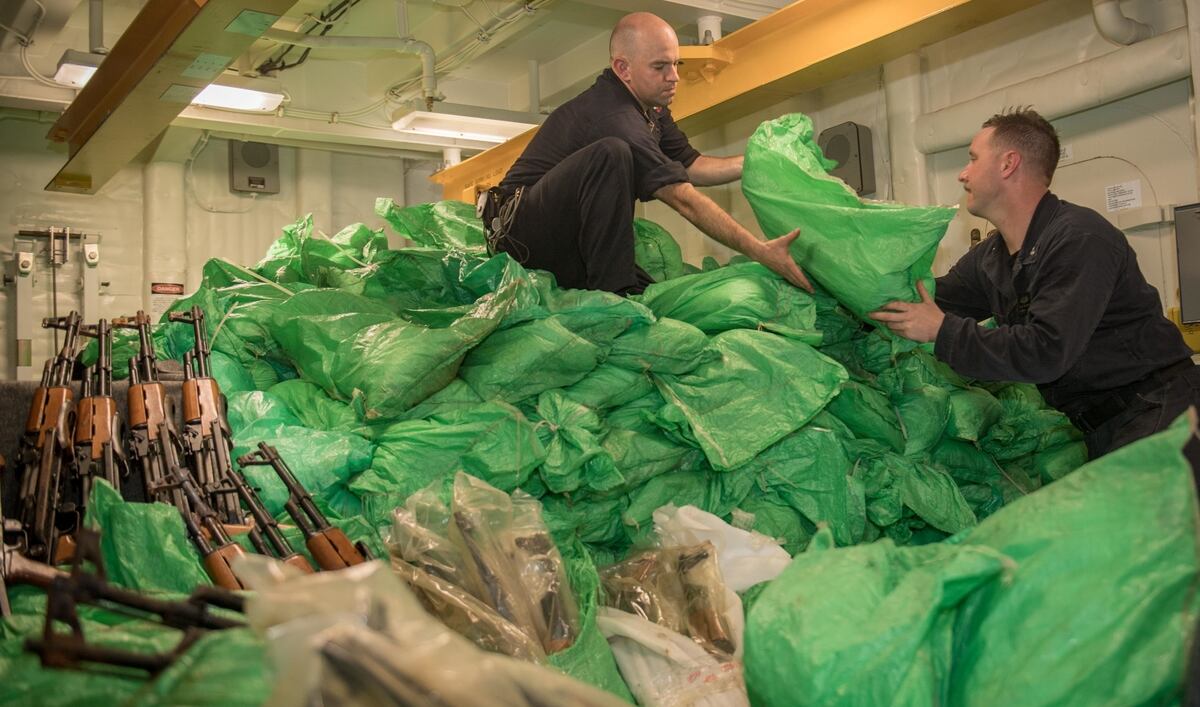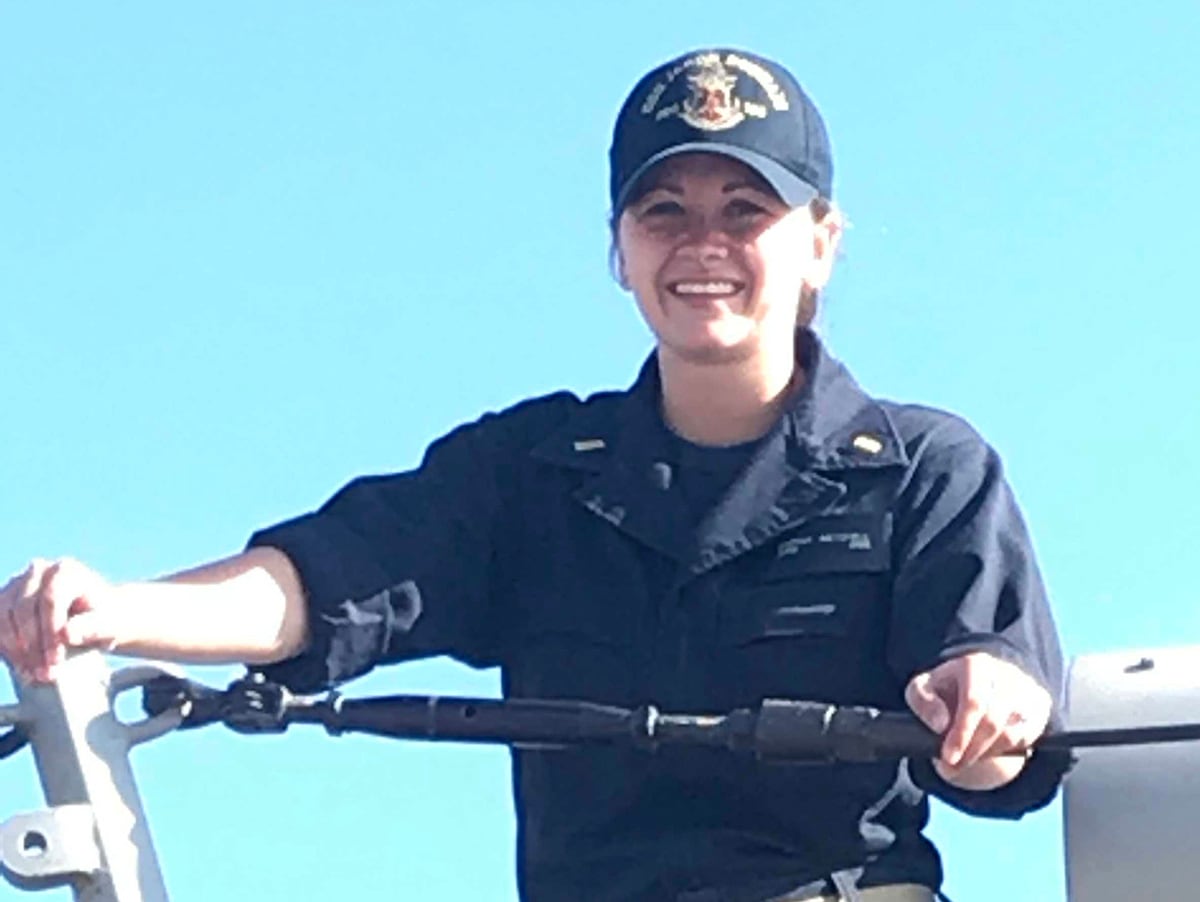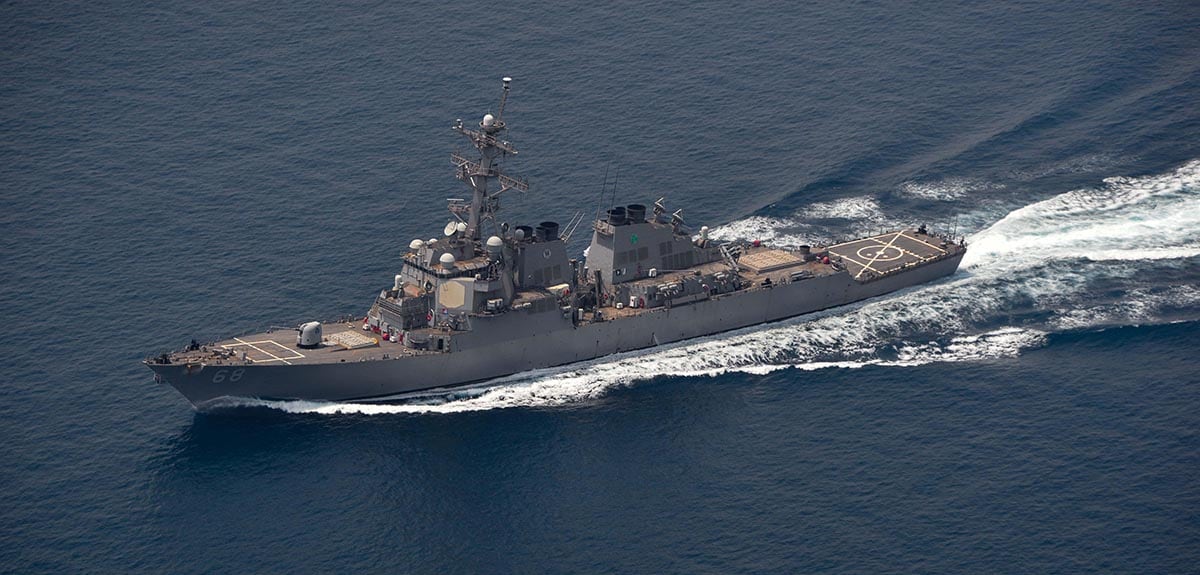Two guided-missile destroyers returned to separate East Coast homeports on Friday after nearly seven months away from family and friends — and just in time to get their shopping done for Christmas.
After spending 209 days deployed, The Sullivans arrived at Florida’s Naval Station Mayport. Sister destroyer Jason Dunham was gone 202 days before pulling into Naval Station Norfolk.
Both Arleigh Burke-class destroyers were late deployers from the Harry S. Truman Carrier Strike Group.
But the flattop’s tour was very different. The flattop left Norfolk on April 11, nearly two months earlier.
The Truman made a surprise return to to Virginia on July 21 for what officials cautioned families was an “working port visit,” not a homecoming, before pulling out again on Aug. 28 for a rendezvous in the Atlantic Ocean with sister carrier Abraham Lincoln.
The the Truman kept going east to join NATO’s massive Trident Juncture exercises in the Norwegian Sea.
The Truman returned to Norfolk on Sunday, capping what Navy leaders said was a successful implementation of the Dynamic Force Employment plan created by departing Defense Secretary Jim Mattis to shake up the Navy’s carrier strike group deployment schedules.
RELATED

The tours of The Sullivans and the Jason Dunham weren’t like that.
The Sullivans left Mayport on May, 26 conducted a training missile shoot in the Atlantic Ocean as part of the crew’s pre-deployment certification, ducked into the Chesapeake Bay and up the York River to onload more ammunition, and then headed east with the Jason Dunham on June 2.
Both destroyers spent their deployments in the 5th and 6th Fleet areas of operation, often sailing in and around the Persian Gulf.
According to a press release from the Jason Dunham , the warship navigated the Bab el-Mandeb 16 times, the Strait of Hormuz twice, the Strait of Gibraltar twice and the Suez Canal twice, sailing more than 40,000 nautical miles.
The Dunham’s sailors visited Haifa and Eilat, Israel; the Azores; Safaga, Egypt; Djibouti; Duqm, Oman; Manama, Bahrain; Jebel Ali in the United Arab Emirates; and Funchal in the Madeiran archipelago of Portugal.
RELATED

“I am very proud of the crew for all of their accomplishments this deployment,” said Cmdr. John Hamilton, the Jason Dunham’s skipper, in the release.
“We had a junior crew, and this was a challenging deployment. The crew remained flexible, focused and motivated despite the rapidly changing schedule and operational commitments.”
The highlight of the Jason Dunham’s crew might’ve happened on Aug. 28, when sailors from the destroyer boarded a boat sailing the Gulf of Aden. They seized 2,521 AK-47 automatic rifles.
The low point was the tragic death of Ensign Sarah Mitchell, who was killed in a July 8 training accident in the Red Sea.

Officials say that The Sullivans also sailed more than 40,000 nautical miles during the tour. The crew completed two Strait of Gibraltar transits, two Suez Canal transits, two Bab-el Mandeb transits and 14 transits through the Strait of Hormuz.
For a large portion of the crew’s time in the 5th Fleet, The Sullivans was the only U.S. destroyer in the Persian Gulf, operating alongside U.S Navy Cyclone-class patrol craft and the vessels of partner nations to preserve the free flow of commerce and freedom of navigation, according to the command’s press release.
The crew visited Rota, Spain; Limassol, Cyprus; Souda Bay, Crete; Manama, Bahrain; Muscat, Oman; Fujairah, United Arab Emirates; and Duqm, Oman.
“The Sullivans crew proved again and again that they have the grit and professionalism that it takes to represent the U.S. Navy and the memory of the Sullivan brothers while deployed," said Cmdr. Pat Eliason, the commanding officer of The Sullivans.
Mark D. Faram is a former reporter for Navy Times. He was a senior writer covering personnel, cultural and historical issues. A nine-year active duty Navy veteran, Faram served from 1978 to 1987 as a Navy Diver and photographer.









